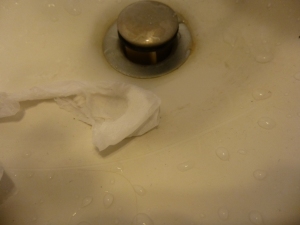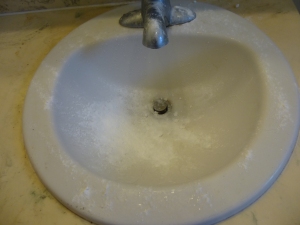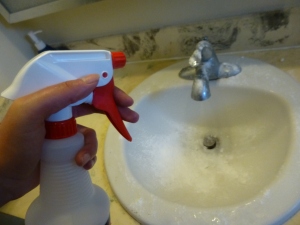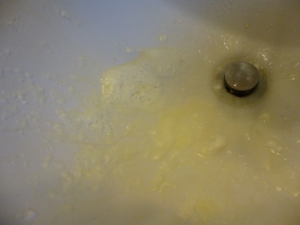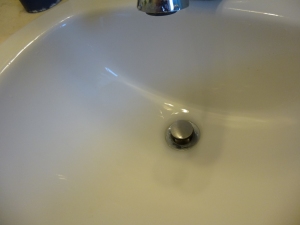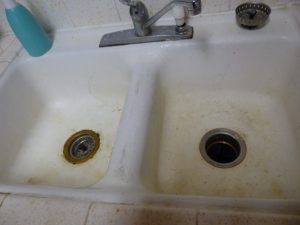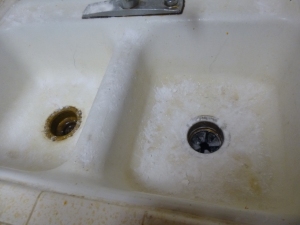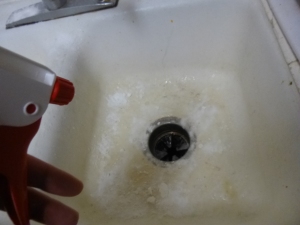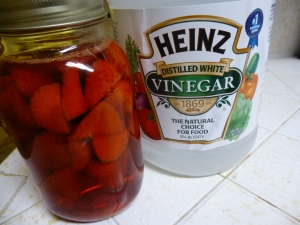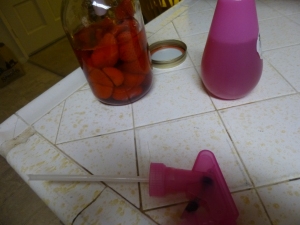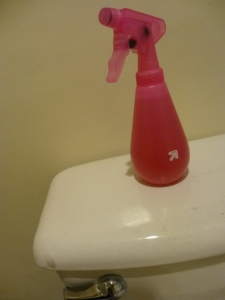Having a good cleaner for your kitchen counters is incredibly important. Most counters have seen everything from raw chicken, to moldy and forgotten food, to cat paws after they’ve been playing with mice outside. Obviously, it’s necessary to wash counters down regularly to kill off bad bacteria before handling food on them.
But there’s the key- you eventually want to handle food on them. Food you also would like to eat. Why would you clean counters you plan on eating from with anything that is toxic if you eat it?
Lysol, and other disinfectant sprays, are incredibly toxic, not only to eat, but to breath, and even to touch. Sure, the little bit you use to spray down your counters won’t kill you, but regular usage of all of those products will add up. And for what? When you can make an equally as effective spray that is non-toxic, cheaper, and smells better.
You will need:
1. White vinegar. White vinegar kills 99% of bacteria, 82% of mold, and 80% of viruses (according to the internet).
2. Optional. Citrus peels. Putting citrus peels in the vinegar not only makes it smell better, but it increases the antibacterial properties. Lemon peels are particularly known to be antimicrobial.
3. Optional. Essential oils. I did not use essential oils, but several have been shown to be good at killing germs as well as helping the smell. Be careful when including essential oils when you have pets or children, because often they can be toxic to eat. Please do your research!
Simple Vinegar Spray Directions:
1. Put white vinegar into a spray bottle. Halfway is standard, but if you want to be very clean, fill the bottle up completely (or whatever amount between 50 and 100% you are comfortable with).
2. Fill the remainder of the bottle with water.
3. Spray what needs to be cleaned.
The vinegar smell usually evaporates pretty quickly and, in all honesty, I think white vinegar smells better than Lysol. But, for those of you who would rather your kitchen didn’t smell like vinegar, there’s a (slightly) more complicated solution.
Citrus Vinegar Spray Directions:
1. Next time you make lemonade, or eat an orange, or make an alcoholic beverage with fresh citrus (preferably with gin), or squeeze a lemon to whiten your whites, save the peels in a jar.
2. Cover the peels with vinegar.
3. If your jar has a metal top, make sure to protect it with parchment paper.
4. Let the peels infuse into the vinegar for at least 2 weeks.
5. In two weeks (or more, longer you let it infuse the stronger it will smell), follow directions for the “Simple Vinegar Spray”.
Here are some images of me demonstrating this (incredibly complicated) procedure.
1. Fill jars up with citrus peels
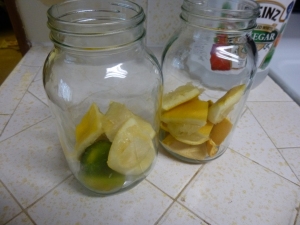
2. Remember, vinegar will rust a regular mason jar lid if directly in contact.
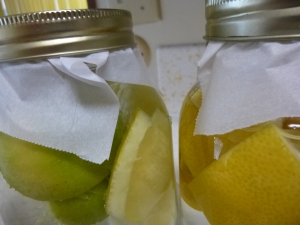
3. A few weeks later, take the jars out of the cool, dark place you had been keeping them.
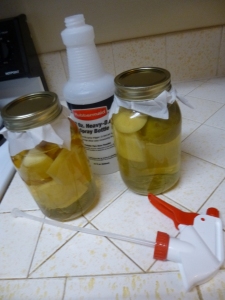
4. Then pour the vinegar into a bottle! (Strain out the peels and pulp).
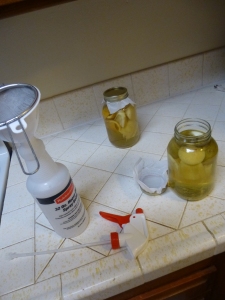
5. Add water.
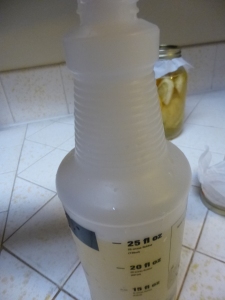
6. And voila!


